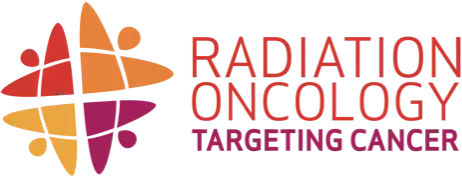External Beam
Radiation Therapy (EBRT)
External beam radiation therapy (EBRT) is when the radiation oncology team deliver highly targeted radiation beams to people from outside the body.
People usually have EBRT treatments from Monday-Friday, for a few days up to a few weeks. These treatments are called fractions.
The radiation oncology team controls the machine that makes and directs the radiation. This machine is called a linear accelerator.
EBRT usually uses x-rays (also called photons). However, it can also use electrons and rare particles such as protons. These particles have a range of properties, which radiation oncologists can use to treat different cancers.
EBRT is like an x-ray or CT scan. There’s no pain or smell and you don’t feel the radiation therapy machine working. You may hear a whirring sound as the machine moves around you.
Conventional External Beam Radiation Therapy (EBRT)
EBRT is when radiation oncologists deliver targeted radiation beams to a tumour from outside the body.
The treatment team shapes the radiation beams as they come out of the linear accelerator, and/or before they reach the person, to make sure they are targeted on the cancer.
Volumetric Arc Therapy (VMAT)
VMAT is a special form of EBRT which delivers hundreds of small radiation beams of different strengths to the tumour from a range of angles.
This type of treatment is very precise. It allows radiation oncologists to give higher doses of radiation without causing too much damage to surrounding organs. Radiation oncologists use VMAT to treat many different types of cancer.
Image-Guided Radiation Therapy (IGRT)
IGRT involves repeated imaging of the tumour before and/or during treatment.
Radiation oncology teams use IGRT in IMRT treatments to target radiation in the right place.
IGRT allows the radiation oncology team to see small changes in tumour or organ shape, size and position. The radiation oncologist uses this information to change the radiation delivery during or between treatments.
This ensures radiation oncologists target the cancer while sparing healthy body parts.
Stereotactic Radiosurgery (SRS)
Radiation oncologists use SRS to treat small tumours with clear edges. It is very useful for cancers in the brain.
For more information, go to Stereotactic Radiosurgery (SRS).
Stereotactic Ablative Body Radiotherapy (SABR)
SABR, also known as Stereotactic Body Radiotherapy (SBRT), is a targeted form of external beam radiation therapy used outside the brain. It gives high doses of radiation to the cancer while protecting healthy body parts. SABR is painless and no surgery is needed. It is very safe and effective.
People usually get 1-5 treatments.
For more information, go to Stereotactic Ablative Body Radiotherapy (SABR).
Superficial Radiation Therapy (SXRT)
Superficial radiation therapy is a treatment that radiation oncologists can use for some types of cancer. It is also called SXRT.
Radiation oncologists use SXRT to treat skin cancer, bone metastases close to the skin and other benign (non-cancer) problems.
For more information, go to Superficial Radiation Therapy (SXRT).
Proton Therapy
Proton therapy is a form of radiation therapy that is helpful in some cases.
The people who benefit most from proton therapy are those with tumours near important organs and young people, as long-term side effects are reduced.
Currently Australians must travel overseas to get this treatment, but a proton therapy unit is being built in Adelaide, South Australia.
For more information, go to Particle Therapy.
- Benefits and Effectiveness
- Treatment Process
- Radiation Oncology Team
- Potential Side Effects
- Indigenous and Maori Care
- Frequently Asked Questions
- Other Useful Resources
- External Beam Radiation Therapy (EBRT)
- Brachytherapy
- Stereotactic Radiosurgery (SRS)
- Stereotactic Ablative Radiotherapy (SABR)
- Superficial Radiation Therapy (SXRT)
- Particle Therapy
- Benefits and Effectiveness
- Treatment Process
- Radiation Oncology Team
- Potential Side Effects
- Indigenous and Maori Care
- Frequently Asked Questions
- Other Useful Resources
- External Beam Radiation Therapy (EBRT)
- Brachytherapy
- Stereotactic Radiosurgery (SRS)
- Stereotactic Ablative Radiotherapy (SABR)
- Superficial Radiation Therapy (SXRT)
- Particle Therapy
Radiation Oncologist
The best person to talk to is a radiation oncologist. You can ask your doctor for a referral to find out if radiation treatment is right for you.
GPs and Health Professionals
Information for any health professional involved in a patient's cancer care with a particular focus on primary care providers.
Talking to Your Doctor
Your GP or other doctors in the cancer team can organise a referral to a radiation oncologist.
Treatment Centres
Search and find your closest Radiation Oncology Treatment Centre.




